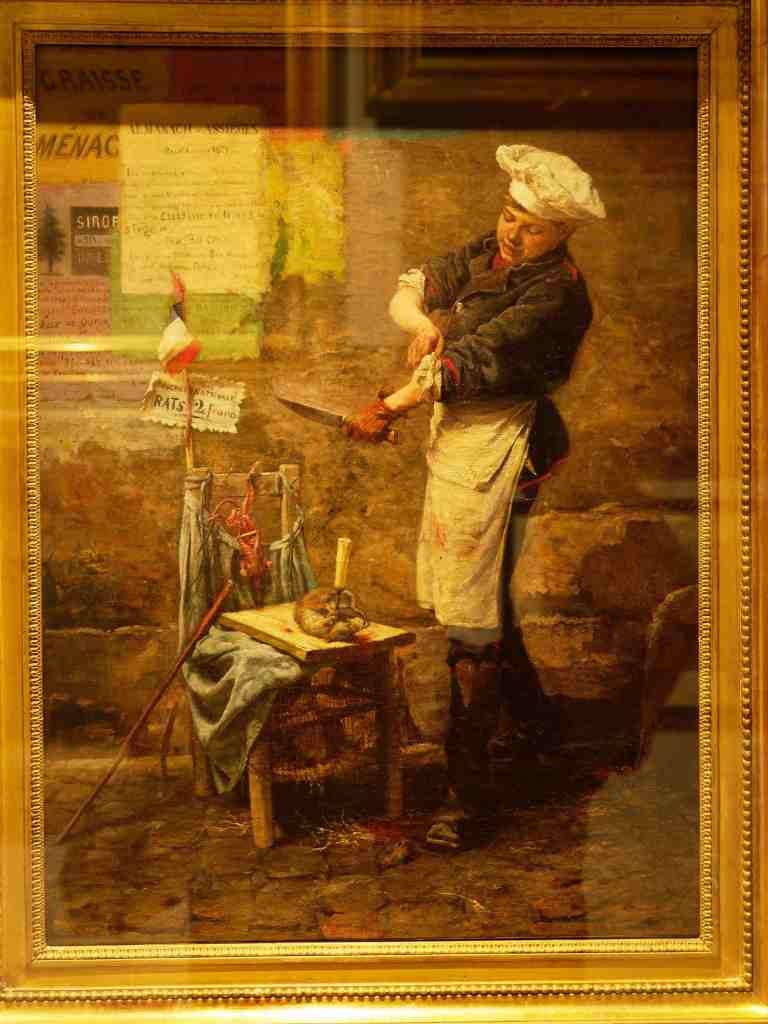Eating Zoo Animals: A Paris Christmas Dinner Menu from 1870
A Famous Chef Turned Zoo Animals into Haute Cuisine During the 1870 Siege of Paris
The 99th Day of the Siege
During the 1870 siege of Paris in the Franco-Prussian war, desperate times led to desperate measures, even for the wealthy elites of the city. Chef Alexandre Etienne Choron of the prestigious restaurant Voisin in Paris crafted an extraordinary Christmas Day menu by turning to the animals of the Jardin des Plantes zoo. The zoo, unable to feed the animals due to the ongoing siege, sold them off, including two of their famous elephants, Castor, and Pollux.
While Choron was famous in his day, certainly within Paris, today it is his Christmas Zoo Menu he is most known for. The top of the menu says, “25 December 1870, the 99th Day of the Siege,” before listing the offerings. People really must have had no idea what they were in for.
Parisians get desperate
All supplies to Paris were cut off, leaving residents to eat whatever they could find. After months of a blockade, the ill-prepared residents of Paris resorted to eating whatever they could. Butchers began selling meat from dogs, cats, and rats. A painting by Narcisse Chaillou and letters from painter Édouard Manet document this grim reality.
In a letter to his wife, Manet wrote: ‘There are cat, dog and rat butchers in Paris now, we eat nothing but horse when we can get it at all.’ In the first months of the siege, Parisians ate 70,000 horses. Curiously, the mail was one of the only things able to leave Paris during the siege, sent out by hot air balloon, as improbably as that sounds.
Despite the dire circumstances, the elite's appetite for haute cuisine remained. Choron’s menu provided a unique dining experience that stood out in culinary history.
The festive menu on December 25, 1870, was a stark contrast to typical holiday fare. It featured dishes such as stuffed donkey head, elephant consommé, and roasted camel “English style.” Other exotic offerings included kangaroo stew, bear shanks in pepper sauce, and wolf haunch in venison sauce. Diners could also enjoy cat garnished with rats and an antelope terrine with truffles. The feast was complemented by fine wines like Mouton Rothschild 1846 and Château Palmer 1864. The elephants were enormously expensive, selling for 27,000 francs, or over €160,000 in today’s currency. One could only assume that the meal was outrageously expensive, but there’s no record of the cost.
Voisin was not the only place taking advantage of the zoo. Restaurant Peters, situated near the Paris opera house, offered a New Year’s Day feast of roast donkey, fillet of elephant in a Madère sauce, bear thighs and peacock.
Not all guests appreciated the effort. English writer Henry Labouchère, who dined at Voisin, wrote, æYesterday, I had a slice of Pollux for dinner” and remarked on the toughness and oiliness of elephant meat, advising against it “for English families” as long as more conventional meats were available.
Eventually, the Germans overran the city and France regained Paris after having agreed to repay Germany for the cost of the war. The Germans then opened the city, parading food in. While Parisians swept the streets behind the Germans to “clean the filth” from their city, some of the first arrivals of food convoys sparked riots and pillaging, while police seemed powerless to stop them.






